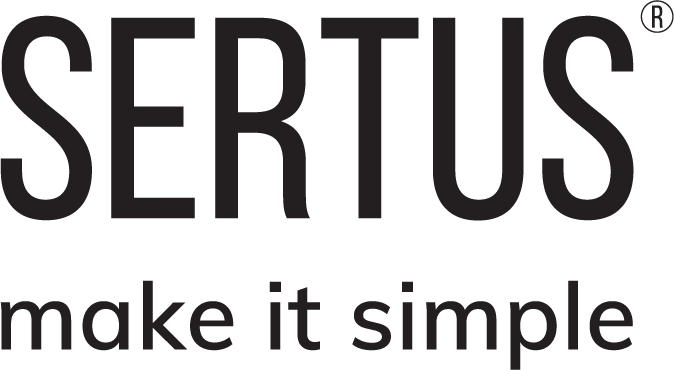Sertus Pod™ Max
System type
Customisations available
Lead times
Dedicated Sertus delivery
At a Glance
Certified to EN 12101-3 (Fans & Ancillaries)
One-lift roof installation
Plug and play set-up, pre-commissioned
Lower CO2 emissions from delivery
Modular design, supports MMC
Optional environmental, inlet, and access modules
Key Features
Modular, pre-commissioned smoke extract Pod™ with dual attenuation
Integrated primary and secondary attenuators for advanced acoustic control
Enables environmental (day-to-day) ventilation with minimal noise disturbance
Supplied fully assembled with duty / standby fans, anti-vibration mounts, and backdraft damper
Single crane-lift design – plug-and-play installation, no on-site assembly required
Powder-coated steel enclosure in RAL 7016 / RAL 7035 for long-term durability
Designed to reduce programme time, cost, and embodied carbon
Sizes & Materials
Available in a range of guaranteed extract rates and static pressures
Constructed from steel, powder-coated in RAL 7016 (Anthracite Grey) and RAL 7035 (Light Grey)
Adjustable mounting feet and lifting eyes for safe handling and installation
Certifications
Certified fan system to BS EN 12101-3:2015 (Fans & Ancillaries)
Independently tested as a complete system assembly
Designed to meet UK Building Regulations for fire safety and smoke control
Factory pre-commissioned and airflow verified prior to delivery
Patent pending – application no. 2515965.8
Description
Tech Specs
Mechanical smoke extract
BS EN 12101-3:2015 (Fans & Ancillaries)
Duty / Standby fans
Primary and secondary attenuation models
Yes – built-in capability for low-noise day-to-day operation
Range of guaranteed extract rates and static pressures
400 V, three-phase
Yes – built-in for redundancy
Powder-coated steel housing
RAL 7016 (Anthracite Grey) / RAL 7035 (Light Grey)
Adjustable feet with lifting eyes
Anti-vibration mounts included
Integrated backdraft damper
Single crane lift – plug-and-play system
Factory pre-commissioned and airflow verified
Calculated and verified
Removable service panels
Dual attenuation for low noise output
Reduced deliveries, crane lifts, and embodied carbon
Patent pending – 2515965.8
Size Guide
| Model | Fan Diameters (mm) | Net Weight (kg) |
|---|---|---|
| 71.21 RMP-R Max | 710 | 335 |
| 71.25 RMP-R Max | 710 | 358 |
| 71.31 RMP-R Max | 710 | 356 |
| 71.40 RMP-R Max | 710 | 428 |
| 71.60 RMP-R Max | 710 | 444 |
| 71.77 RMP-R Max | 710 | 478 |
| 71.80 RMP-R Max | 710 | 478 |
Downloads
Complete Documentation Pack
Download a zip file containing all documents for this product.
Technical Data Sheet
Technical Data Sheet (Sound Data)
Operation & Maintenance Manual
Warranty
BIM Model
Videos
Two Minute Tuesday – Fan Testing & Certification with the Sertus Pod™
Two Minute Tuesday – Smoke Control Strategies with the Sertus Pod™
Two Minute Tuesday – The Sertus Fan Pod™ On-Site
Two Minute Tuesday – Installation Benefits of the Sertus Pod™
Two Minute Tuesday – Sertus Pod™ & Fire Safety Compliance
Two Minute Tuesday – Sertus Pod™ vs Traditional Smoke Extract Fan Methods
The future of smoke extract is here...
Why this smoke extract product will work in your project!
The Sertus Pod™ Range Launch 🚀
Yes, our Pods are designed to activate the standby fan based on current monitoring of the duty fan, not through a pressure sensor.
This topic has generated various opinions. While the SCA guide suggests running the fan at 100% on DOL, we believe this approach is outdated, especially with the availability of inverter control and advanced monitoring systems. Allowing fans to run unchecked could lead to overheating and potential fire risks. Our solution offers a compromise: if the standby fan loses communication, it will continue to operate according to the last command received. This means if the fan was in boost mode, it will remain in boost; if it was in Manual Override (MOE), it will stay in that mode; and if it was turned off, it will remain off, all while utilising the inverter instead of DOL.
We sell the Pod™ as a complete unit; however, customers have the flexibility to modify it on-site if they prefer to have the fan and control panel remote from each other. It is important to ensure that if the control panel is mounted remotely, it should be located in the same fire zone as the fans, especially if an Automatic Transfer Switch (ATS) is involved.
Yes, we can install a podded coned attenuator inside a standard frame, which offers improved noise absorption. Please note that this option may incur additional costs, and we might need to upgrade the Pod™ to compensate for the loss of airflow. This solution is ideal for meeting stringent acoustic standards.
Yes, the electrical figures listed in the technical data sheet are already based on a three-phase configuration.
A weekly basic test is ideal, but the frequency is ultimately at the discretion of the building maintenance team. Typical testing durations can range from 30 seconds to 5 minutes, depending on their preference for confirming system performance. Additionally, every six months, a more comprehensive service should be conducted by a dedicated specialist. During this service, the fan may run for up to approximately 5 minutes to verify correct operation and component functionality.
Related Case Studies
Explore real projects using our smoke ventilation products across both residential and commercial sectors.
